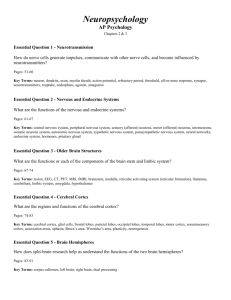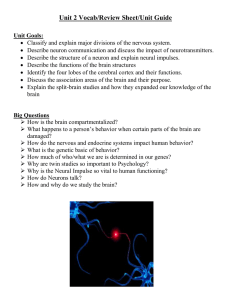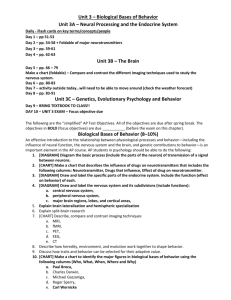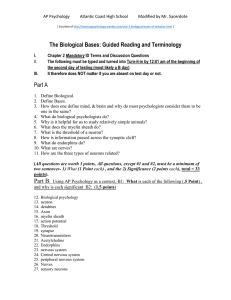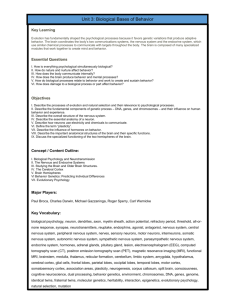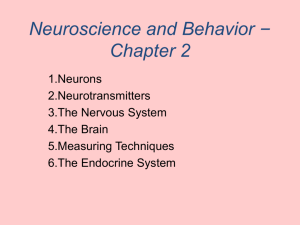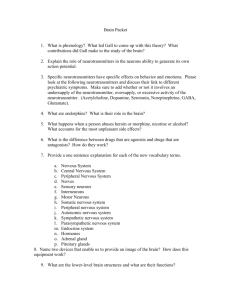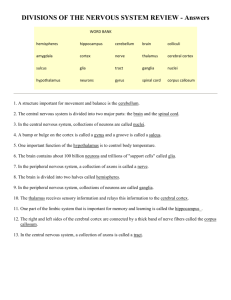AP Psychology - East Lyme Public Schools
advertisement
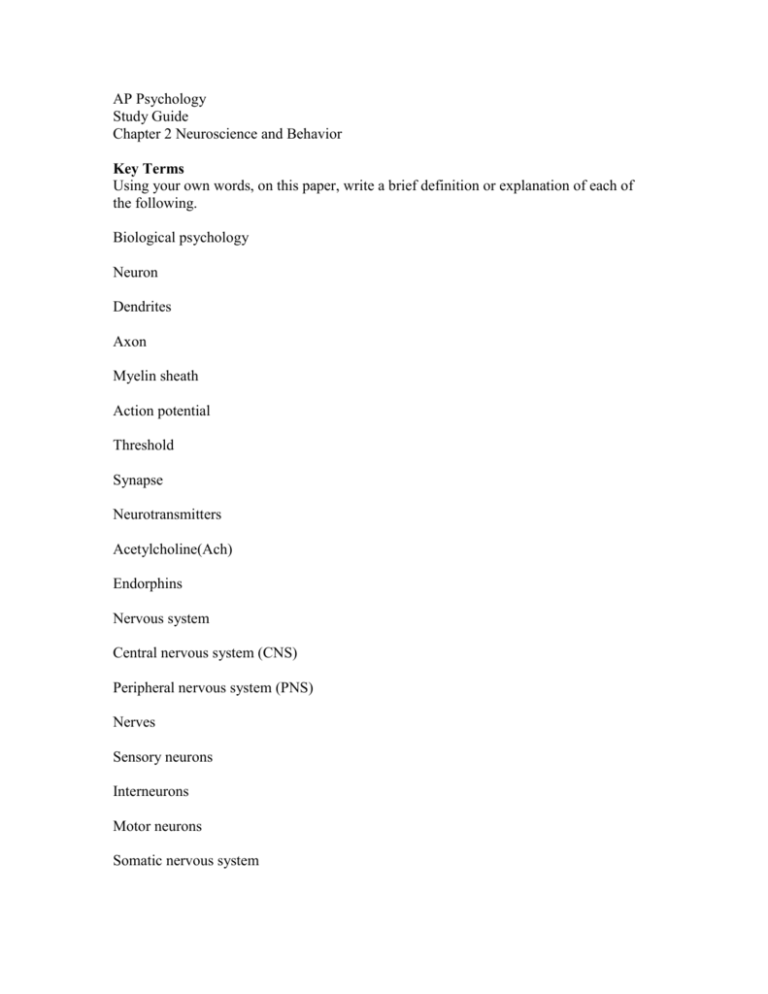
AP Psychology Study Guide Chapter 2 Neuroscience and Behavior Key Terms Using your own words, on this paper, write a brief definition or explanation of each of the following. Biological psychology Neuron Dendrites Axon Myelin sheath Action potential Threshold Synapse Neurotransmitters Acetylcholine(Ach) Endorphins Nervous system Central nervous system (CNS) Peripheral nervous system (PNS) Nerves Sensory neurons Interneurons Motor neurons Somatic nervous system Autonomic nervous system Sympathetic nervous system Parasympathetic nervous system Reflex Neural networks Lesion Electroencephalogram (EEG) CT (computed tomography) scan PET (positron emission tomography) MRI (magnetic resonance imaging) Brainstem Medulla Reticular formation Thalamus Cerebellum Limbic system Amygdala Hypothalamus Cerebral cortex Glial cells Frontal lobes Parietal lobes Occipital lobes Temporal lobes Motor cortex Sensory cortex Association areas Aphasia Broca’s area Wernicke’s area Plasticity Corpus callosum Split brain Endocrine system Hormones Questions Neural Communication (pp. 58-65) 1. Explain why, at every level, our existence is both part of a larger system and a combination of smaller systems. 2. Describe the structure of a neuron and the process by which an action potential is triggered. 3. Discuss how nerve cells communicate, and discuss the importance of neurotransmitters for human behavior. 4. Discuss the significance of endorphins, and explain how drugs influence neurotransmitters. The Nervous System (pp. 65-69) 1. Identify the major divisions of the nervous system and their primary functions, and describe the neurons that carry information throughout the system. 2. Describe the operation of reflexes in the spinal cord and neural networks in the brain. The Brain (pp. 69-94) 1. Identify and explain the methods used in studying the brain. 2. Describe the functions of structures within the brainstem, as well as those of the thalamus and cerebellum. 3. Describe the functions of the structures in the limbic system. 4. Describe the structure and functions of the cerebral cortex. 5. Discuss how damage to one of several different cortical areas can impair language functioning, and outline the process by which the brain directs reading aloud. 6. Discuss brain plasticity and what it reveals about brain reorganization. 7. Describe research on divided and undivided brains, and discuss what it reveals regarding normal brain functioning. 8. Discuss the brain organization of left-handed people and why left-handedness seems to diminish with age. The Endocrine System (pp. 94-96) 1. Discuss the functioning of the endocrine system. 2. Identify two important endocrine glands, and specify their functions.


